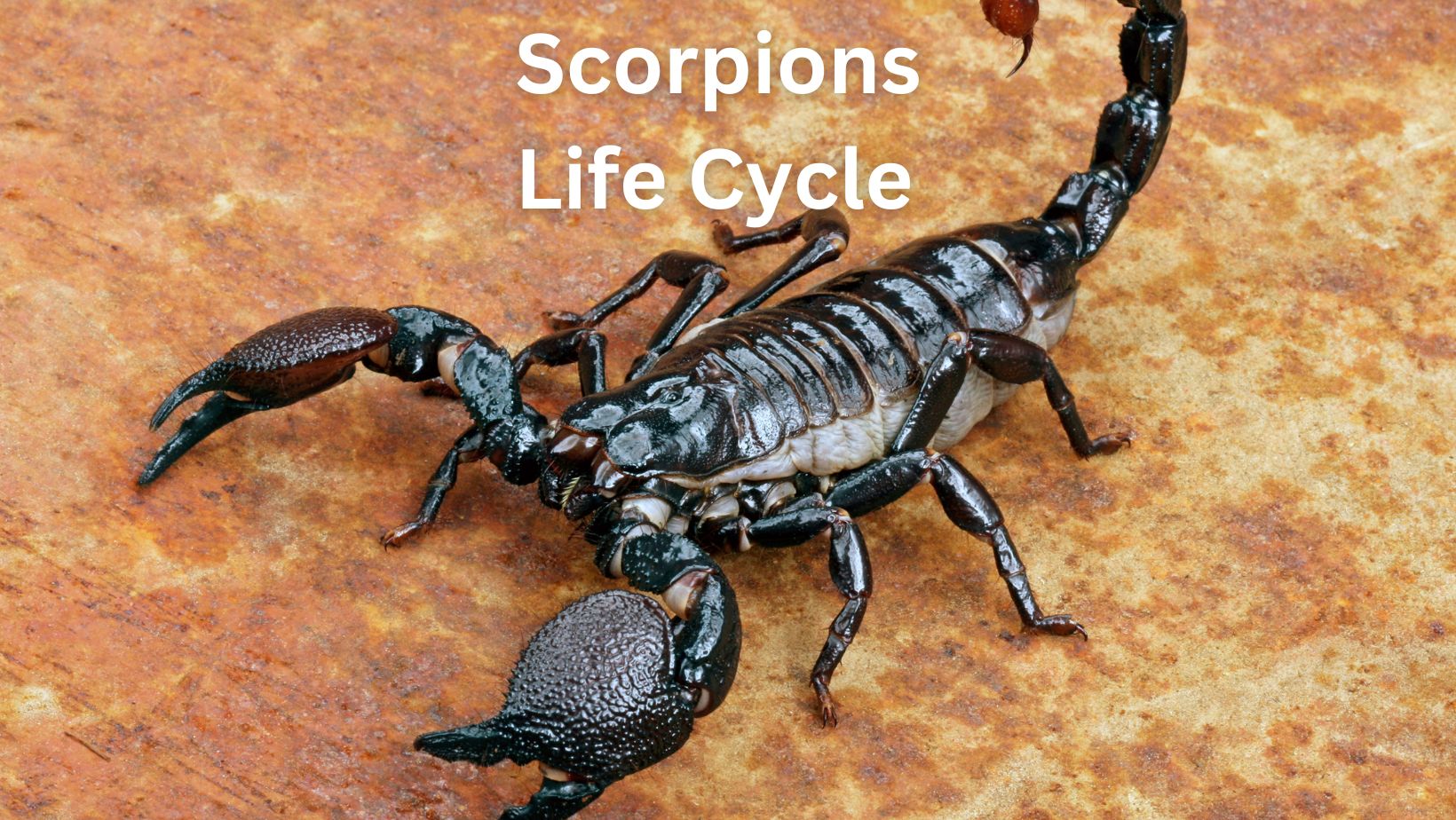Scorpions are arachnids characterized by their distinctive appearance. They have a segmented body consisting of a cephalothorax (head and thorax) and an elongated abdomen, which ends in a tail-like structure called a metasoma. At the end of the metasoma, scorpions have a venomous stinger used for defense and capturing prey. Scorpions come in various sizes, ranging from a few centimeters to larger species measuring several inches in length. They have two pincers (pedipalps) at the front of their body, which they use to seize and immobilize prey.
Scorpions Life Cycle Stages
The life cycle of scorpions typically consists of several stages:
- Birth: Scorpions are born as live offspring, known as scorplings. The mother scorpion carries the embryos internally until they are ready to be born. When born, the scorplings resemble miniature versions of adult scorpions.
- Early Instars: After birth, the scorplings enter the early instar stage. During this stage, they are small, soft-bodied, and vulnerable. They undergo several molts to shed their exoskeletons as they grow. The frequency of molting is higher in the early instar stages compared to later stages.
- Juvenile Stage: As the scorplings continue to molt and grow, they enter the juvenile stage. At this point, they start developing more distinct characteristics of adult scorpions. Their exoskeleton becomes harder, and their pincers and stinger become more pronounced. They resemble miniature versions of adult scorpions but are not yet sexually mature.
- Sub-Adult Stage: In the sub-adult stage, scorpions are approaching sexual maturity. They are larger in size compared to juveniles and exhibit the physical traits of adults. However, they are not yet capable of reproduction.
- Adult Stage: Upon reaching sexual maturity, scorpions enter the adult stage. They have fully developed reproductive organs and are capable of reproducing. Adult scorpions have a hardened exoskeleton and exhibit the characteristic features of their species, including distinct body shape, coloration, and pincer size.
The duration of each stage can vary depending on the scorpion species, environmental conditions, and availability of resources. Factors such as temperature, food availability, and genetic factors can influence the timing and progression through the life cycle stages.
Habitat:
Scorpions can be found in diverse habitats around the world. They are highly adaptable and can thrive in various environments. They are commonly found in deserts, but they also inhabit grasslands, forests, caves, and tropical regions. Scorpions prefer areas with shelter such as rocks, crevices, logs, and burrows, where they can hide during the day and hunt at night.
Species:
There are over 2,000 known species of scorpions, belonging to the class Arachnida and the order Scorpiones. Some well-known species include the Arizona bark scorpion, Emperor scorpion, Deathstalker scorpion, and the Hottentotta genus. Different species exhibit variations in size, coloration, venom potency, and behavior.
Diet:
Scorpions are carnivorous predators. They feed primarily on insects, spiders, and other small arthropods. Scorpions are opportunistic hunters, lying in wait for their prey and using their pincers to grab and subdue it. Once caught, they use their venomous stinger to inject paralyzing venom into their prey, immobilizing it. Scorpions have a relatively low metabolic rate and can survive for extended periods without food.
Life Cycle:
- Birth: Scorpions are born as live offspring, known as scorplings, after a gestation period that varies by species. They are already miniature versions of adult scorpions.
- Growth: Scorplings go through a series of molts or shedding of their exoskeletons as they grow. They molt several times before reaching adulthood, and the frequency of molting decreases as they get older.
- Maturation: The time it takes for a scorpion to reach maturity varies depending on the species. It can range from a few months to several years. Once they reach maturity, they are capable of reproducing.
- Reproduction: Scorpions reproduce sexually. The male courts the female through a mating ritual, and he deposits a spermatophore that the female picks up with her genital opening. Fertilization occurs internally, and the female carries the embryos until they are born.
- Lifespan: The lifespan of scorpions can vary depending on the species and environmental factors. Some scorpions live for several years, while others may have shorter lifespans.
Age:
Determining the precise age of a scorpion is challenging, as it doesn’t leave clear markers like annual rings on tree trunks. Age estimation is often based on the scorpion’s size, growth rate, and observations of its life cycle stages. However, the specific age of an individual scorpion can be difficult to determine without specialized research techniques.
Reproduction:
Scorpions reproduce sexually, and most species engage in internal fertilization. The male transfers sperm to the female using a spermatophore. The female carries the embryos inside her until they are born as live offspring. The number of offspring produced can vary by species, ranging from a few to over a hundred scorplings.
It’s important to note that specific aspects of the scorpion life cycle, age, and reproduction can vary between species. Different scorpion species have their own unique characteristics and behaviors regarding these aspects.
